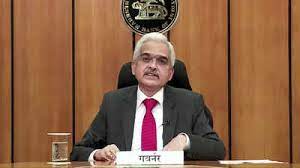How is the RBI Governor appointed? Know the process

How is the RBI Governor selected? Know the process
As the tenure of current RBI Governer ended on 11 Dec 2024, Government appointed Sanjay Malhotra, a 1990-batch IAS officer, as the 26th RBI Governor.
In India, Reserve Bank of India (RBI) is called as Banker of Banks. Its central bank that monitors the operations of Banks and other financial institutions.
The RBI Governor holds the most prominent position in the country’s financial sector, overseeing tasks ranging from signing currency notes to ensuring the efficient functioning of the banking system. Here’s an overview of the selection process for the RBI Governor.
How is the RBI Governor appointed?
The appointment of the RBI Governor is governed by the RBI Act of 1934.
Responsibility for Selection
A financial sector regulatory appointment search committee which includes the Cabinet Secretary, the current RBI Governor, the Financial Services Secretary, and two independent members, shortlists candidates.
Shortlisted candidates are then interviewed by the committee. The list of selected candidates is then forwarded to the list to the Cabinet Committee on Appointments, headed by the Prime Minister.
Once the Cabinet Committee approves the candidate, the appointment is confirmed by the central government.
The governor holds office for periods not exceeding five years. The term of the governor may be fixed by the government at the time of his appointment. The central bank chief is eligible for reappointment or extension.
Eligibility Criteria for RBI Governor Post
The candidate usually possesses extensive experience in fields like economics, banking, finance, or public administration.
They can have varied backgrounds, including:
– Senior economists
– Former Secretaries or bureaucrats
– Professionals from financial institutions or academia
While there are no strict formal qualifications required, the individual is anticipated to have significant expertise and strong leadership skills in economic and monetary policy.
Responsibility of RBI Governor
(1).Monetary Policy Management
-Develops and executes monetary policies aimed at controlling inflation and maintaining economic stability. Leads the Monetary Policy Committee (MPC), which makes decisions on essential interest rates such as the repo rate and reverse repo rate.
(2).Currency Issuance and Management
-The Reserve Bank of India is responsible for issuing and managing Indian currency notes, with the exception of the ₹1 note, which is issued by the Ministry of Finance. It also ensures that there is a sufficient supply of currency in circulation.
(3).Banking regulation and supervision
Banking regulation and supervision involves overseeing commercial banks, cooperative banks, and various financial institutions. It aims to maintain the stability and efficiency of the banking sector by establishing compliance standards.
(4).Foreign Exchange Management
-Responsible for managing India’s Foreign Exchange Reserves. Supervises foreign exchange transactions and policies in accordance with the Foreign Exchange Management Act (FEMA).
(5).Government’s Banker
-Serves as the banker for both central and state governments, overseeing their accounts and managing public debt. Assists in the issuance of government securities and treasury bills.
The responsibilities of the RBI Governor are crucial for ensuring financial discipline and fostering economic growth in India.




